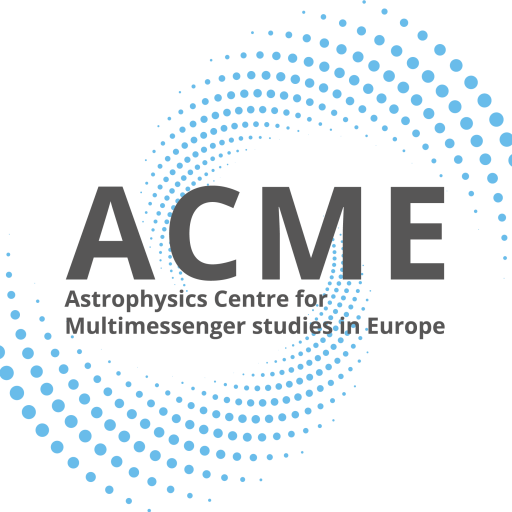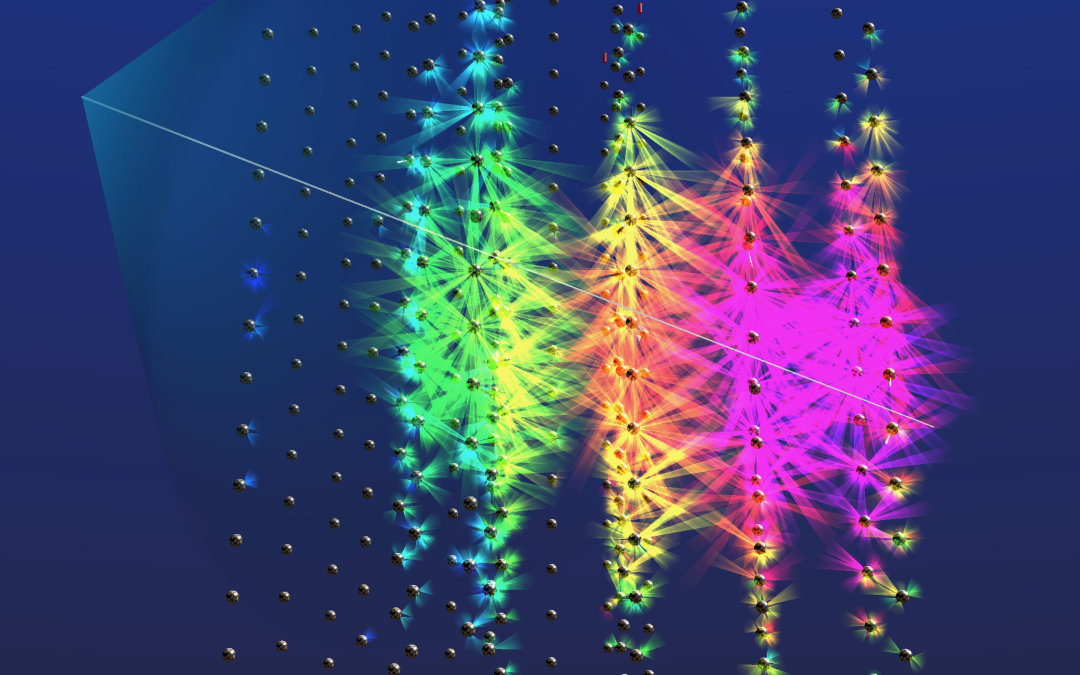An extraordinary event consistent with a neutrino with an estimated energy of about 220 PeV (220 million billion electron volts), was detected on February 13, 2023, by the ARCA detector of the kilometre cubic neutrino telescope (KM3NeT) in the deep sea. This event, named KM3-230213A, is the most energetic neutrino ever observed and provides the first evidence that neutrinos of such high energies are produced in the Universe. After long and meticulous work to analyse and interpret the experimental data, today, February 12, 2025, the international scientific collaboration of KM3NeT reports the details of this amazing discovery in an article published in Nature.
The detected event was identified as a single muon which crossed the entire detector, inducing signals in more than one third of the active sensors. The inclination of its trajectory combined with its enormous energy provides compelling evidence that the muon originated from a cosmic neutrino interacting in the vicinity of the detector.
“KM3NeT has begun to probe a range of energy and sensitivity where detected neutrinos may originate from extreme astrophysical phenomena. This first ever detection of a neutrino of hundreds of PeV opens a new chapter in neutrino astronomy and a new observational window on the Universe”, comments Paschal Coyle, KM3NeT Spokesperson at the time of the detection, and researcher at CNRS Centre National de la Recherche Scientifique – Centre de Physique des Particules de Marseille, France.
The high-energy universe is the realm of cataclysmic events such as accreting supermassive black holes at the centre of galaxies, supernova explosions, gamma ray bursts, all as yet not fully understood. These powerful cosmic accelerators, generate streams of particles called cosmic rays. Some cosmic rays may interact with matter or photons around the source, to produce neutrinos and photons. During the travel of the most energetic cosmic rays across the Universe, some may also interact with photons of the cosmic microwave background radiation, to produce extremely energetic “cosmogenic” neutrinos.
“Neutrinos are one of the most mysterious of elementary particles. They have no electric charge, almost no mass and interact only weakly with matter. They are special cosmic messengers, bringing us unique information on the mechanisms involved in the most energetic phenomena and allowing us to explore the farthest reaches of the Universe”, explains Rosa Coniglione, KM3NeT Deputy-Spokesperson at the time of the detection, researcher at the INFN National Institute for Nuclear Physics, Italy.
This ultra-high energy neutrino may originate directly from a powerful cosmic accelerator. Alternatively, it could be the first detection of a cosmogenic neutrino. However, based on this single neutrino it is difficult to conclude on its origin. Future observations will focus on detecting more such events to build a clearer picture. The ongoing expansion of KM3NeT with additional detection units and the acquisition of additional data will improve its sensitivity and enhance its ability to pinpoint cosmic neutrino sources, making it a leading contributor to multi-messenger astronomy.
The KM3NeT Collaboration brings together more than 360 scientists, engineers, technicians and students of 68 institutions from 21 countries all over the world.
KM3NeT is included in the roadmap of the European Strategy Forum on Research Infrastructures, which recognises KM3NeT as a priority research infrastructure for Europe. KM3NeT receives funding from the European Union as well as national research agencies in several countries, KM3NeT has benefitted from various fundings through the European research and innovation programmes as well as the European Regional Development Fund.
Original press release: https://www.km3net.org/km3net-detects-the-highest-energy-neutrino-ever-observed/

